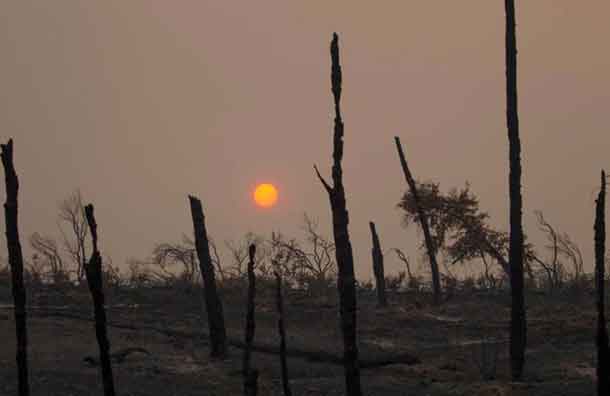
By Andrew Hay
(Reuters) – California firefighters made progress on Wednesday containing some of the largest wildfires in state history, as Governor Gavin Newsom said he expected a big jump in the number of homes destroyed and a rise in deaths in a disaster tied to climate change.
Cooler temperatures for the second straight day helped firefighters battle the largest blazes in the San Francisco Bay Area, as state wildfire authority Cal Fire reported 1,700 houses and other structures burned across the state in fires that have killed seven people.
“We anticipate that number to grow substantially in the coming days and weeks,” Newsom told a news briefing as authorities began to enter some burn areas to assess losses.
“Once the fires are suppressed and we get back in and start seeing repopulation we’re likely to discover additional fatalities,” he said.
A wildfire in redwood forests north of Santa Cruz was one-fifth contained with the number of structures incinerated rising over 60% to 538, Cal Fire said.
“Our home and a lifetime of art, photos and treasured family things are completely lost,” tweeted social media user Cheryl Isaacson after her house was burned by the CZU Lightning Complex fire.
Across Northern and Central California over 15,000 firefighters from half a dozen states battled two dozen large fires sparked by a barrage of over 14,000 dry-lightning strikes since Aug. 15.
The strikes during record temperatures started over 700 wildfires, which have scorched an area larger than the state of Delaware.
Newsom blamed climate change for the 1.4 million acres of the state burned so far in 2020, 25 times more than this time last year.
He pointed to the CZU fire, the largest in recorded history in the area’s coastal rainforests, as a consequence of rising average temperatures.
“This is again another testament, a demonstrable example of the reality, not just the assertion, the reality of climate change in this state,” he said.
In the north Bay Area, nearly 1,000 homes and structures, many in farms and vineyards, were incinerated in the wine country of Napa, Sonoma, and Solano counties.
Television images showed piles of rubble and gray ash where homes had stood after the LNU Lightning Complex fire raged across hillsides around Lake Berryessa, about 40 miles west of Sacramento.
That fire, the third-largest in California history, jumped to 33% containment overnight as nearly two dozen bulldozers and around 1,700 firefighters carved earth containment lines and set controlled burns to create fire breaks.
In the south Bay Area, evacuation orders were lifted for communities in Santa Clara, San Joaquin and Alameda counties where the state’s second-largest fire in history was 25% contained after burning an area larger than Los Angeles.
Statewide the number of people under evacuation orders fell to around 120,000.
(Reporting by Andrew Hay; Editing by Aurora Ellis and Tom Brown)





